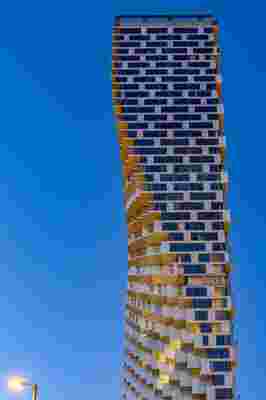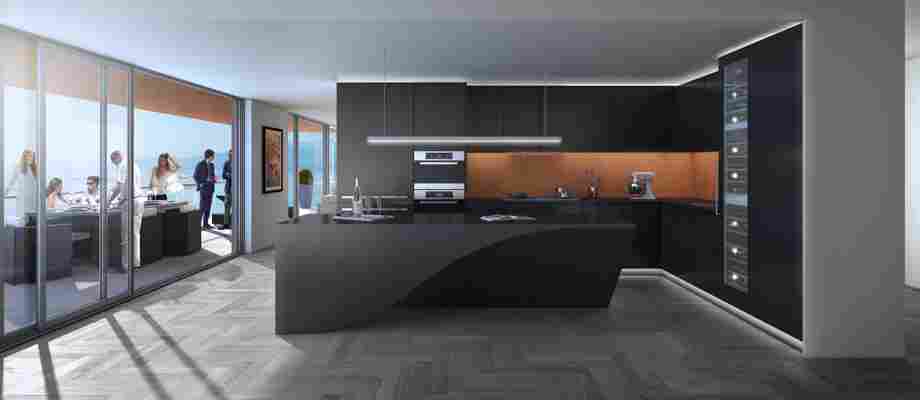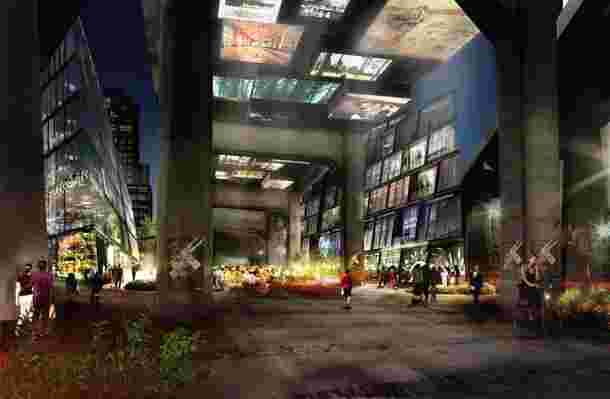Almost a decade ago, a young(er) Bjarke Ingels was commissioned to take on the challenge of designing a building among Vancouver’s labyrinth of roads and ramps. Today, when you drive across Granville Bridge into downtown Vancouver (a stretch that crosses False Creek, a body of water opposite to Vancouver Harbor), what catches your attention isn’t the sparkling sea or the snow-capped mountains in the background, but a 493-foot cantilevered residential tower that twists and turns as it stretches toward the sky.
While the exterior is essentially completed, there are just a few panels left before Vancouver House is done. It sits between the spaces where Granville Bridge trifolds, the building’s expressive form a direct response to the environment around it. For its design, Ingels had to consider a long list of concerns, including restrictions on the building’s silhouette such as ensuring enough daylight on a neighborhood park. Put this and other restrictions together and the solution expresses itself. The result is a 59-story tower that appears turned upside down, but actually rises out of a tight triangular floorplate and curves away from the bridge, gradually transforming into a rectangle by the time it reaches the top. Ingels describes Vancouver House as a “contemporary descendant of the Flatiron Building in New York.”

Vancouver House is 493 feet tall, making it the fourth tallest building in the city.
The setting presented Ingels with the opportunity to get creative and turn negatives, such as awkward bridges and near-constant annual rain, into positives. “People think that there are certain things that merit effort in architecture, and then there are other things that don’t,” says Ingels, describing a “back of house, front of house” approach that has been a detriment to the urban landscape of cities around the globe. Where we park our car, the underpass we cross on our way to work, where we drive on the highway—these are the things we accept as if they were not part of our everyday existence. “But in the end, that’s where we probably spend most of our lives.” Ingels’s approach to Vancouver House was that there was no “back of house.” That type of thinking wouldn't have worked with the restrictions the architect was dealing with.

A rendering shows the interior layout of the kitchen, which is an open floor plan leading to a private outdoor patio.
“We had a chance to really play with this idea of saying, what if the underside of the bridge is an umbrella, what if it’s a Sistine Chapel,” says Ingels. Walk into a European train station or church and you often look up. And if the ceiling is a canvas that grabs our attention, then the building is just a shape that stretches the canvas. “If you look at Vancouver House and see these triangles that the building is wedged between, you start to understand how the bridges have given shape to these forms,” says Ingels.

A rendering reveals what will be built under the Granville Bridge.
In the coming months, the underpass of the bridge will become an outdoor art gallery showcasing a collection of spaces filled with works by photo-conceptual artists. “I think Vancouver House is a perfect example of the power of architecture,” says Ingels. What it shows is that the spaces that cities have given up on, and that developers have dismissed, can become not only compelling, but also destinations in their own right.
